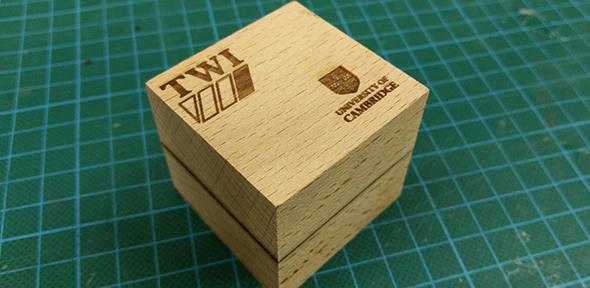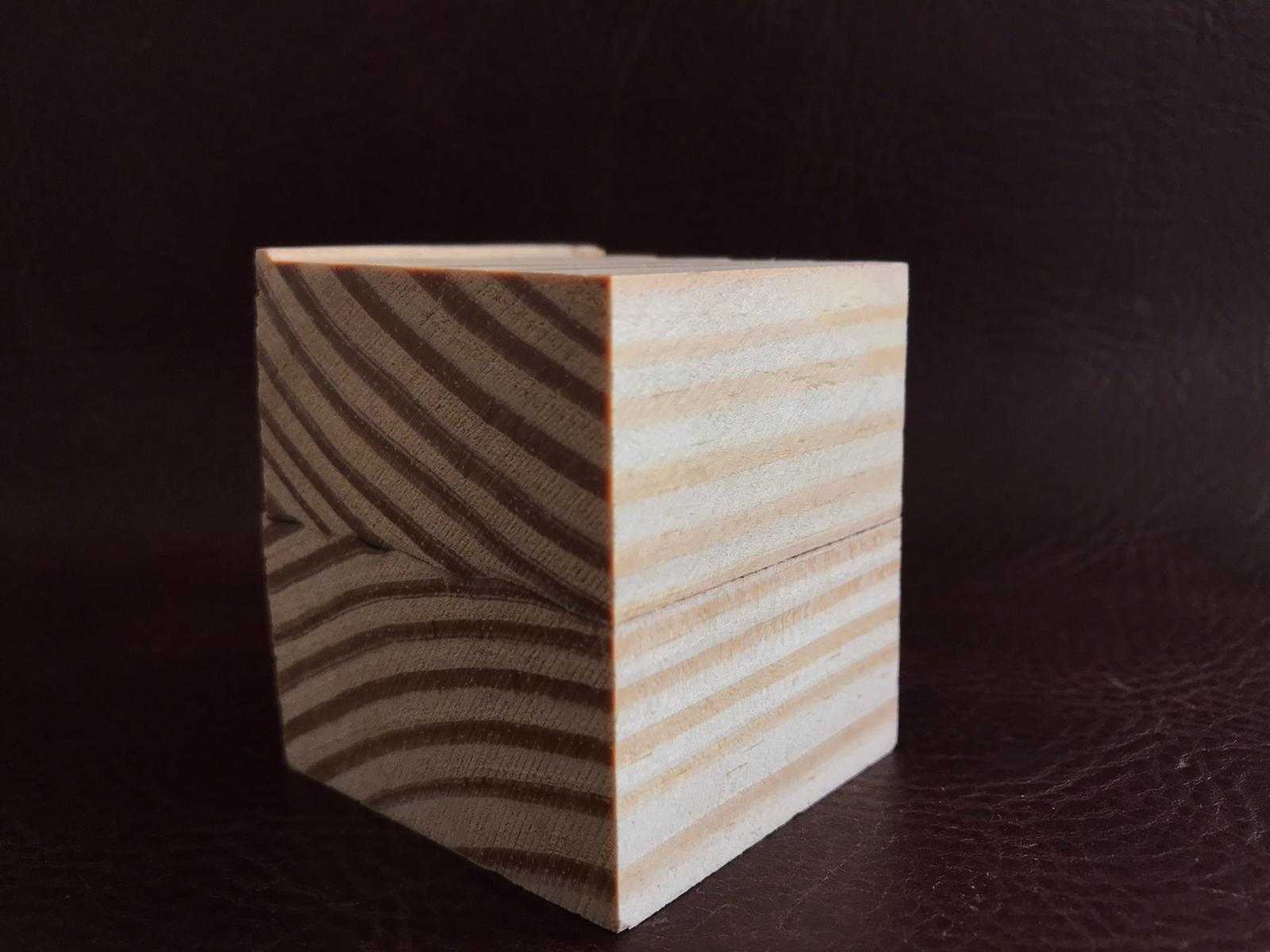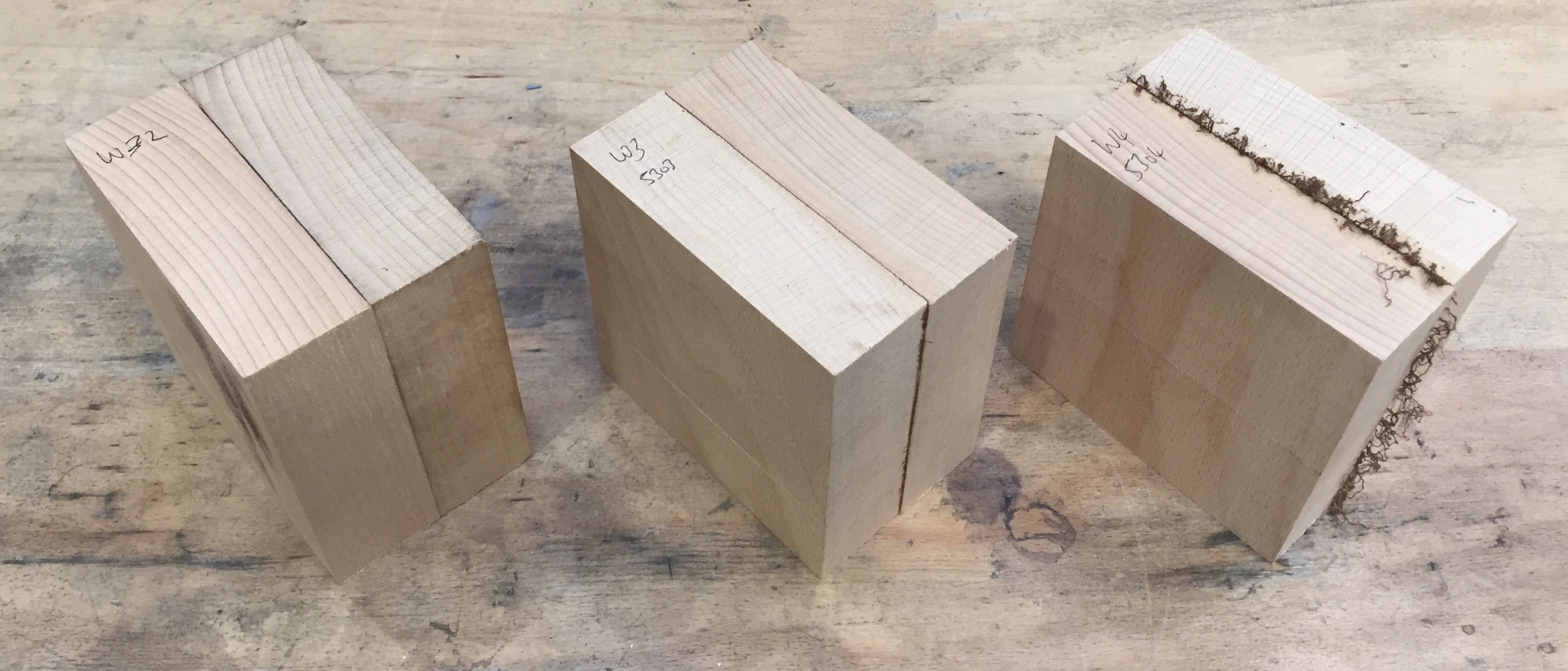
Submitted by Angela Walters on Mon, 17/05/2021 - 16:16
In a proof-of-concept collaboration between TWI Ltd and the University of Cambridge and enabled by the Construction Innovation Hub, researchers have developed a sustainable process to rapidly join timber elements using linear friction welding. Two years into the project they have been able to join pieces of wood in two to three seconds by rubbing them together at high speeds, with the resulting welded joint being stronger than conventional adhesives and as strong as the timber itself. Scaled up, this welding technique could be applied in building construction and high-volume manufacturing of products such as furniture and packaging.
Timber construction offers an opportunity to capture carbon dioxide from the atmosphere and store it long term in buildings. Mass timber construction with engineered timbers offers further advantages related to speed of construction through off-site prefabrication and on-site rapid assembly. Both these benefits of sustainability and speed can be further enhanced through the development of rapid timber joining techniques. Timber joints relying on adhesives, for example, require drying (over several hours), may present health hazards, and can limit the end-of-life options of the timber.
Along with industry partners TWI Ltd, Dr Darshil Shah and Dr Michael Ramage from the Department of Architecture and the award-winning team behind the HappyShield open-source PPE design, have developed a process to rapidly join timber elements using linear friction welding. In contrast with traditional methods such as adhesives, linear friction welding of wood can reliably produce high quality joints with high tolerances and does not require any filler or adhesive material.
In this energy-efficient process, joints are produced by pressing and rubbing two timber surfaces together at high frequency (50-150 Hz). The resulting friction and heat softens and re-sets lignin, the natural ‘glue’ in plant materials, as well as mechanically inter-locks the cellular material, causing the ‘welding’. In just two to three seconds, the fused timber joint is stronger than conventional adhesives, and even stronger than the native wood.Imagine you’re out walking on a cold day and want to warm up your hands; you’re likely to rub your hands together to generate heat. ‘How do you produce more heat?’ asks Dr Shah. ‘Rub your palms faster (frequency), push your palms against each other with more force (pressure), rub your palms for longer (time) and move your palms over a longer distance (amplitude). Similarly, in wood welding, to generate more friction and heat, these are the 4 principal manufacturing parameters we can control.’
This technique has the potential to be applied not only to planed/sawn wood, but also to CLT (Cross Laminated Timber) which is the key timber-origin material used in the work by the team from the Dept of Architecture in their project.
The team continues to explore how these parameters change the process and why it seems to work differently with different woods. This will help them find the right materials and manufacturing parameters to optimise the process and scale it up for different purposes, such as construction and manufacturing. In this initial proof-of-concept study, the team demonstrated the suitability of the process on a variety of hardwoods, softwoods and engineered woods (e.g. MDF), using various grain orientations. More recently, they have focused on beech, a European hardwood that is widely-used in construction and furniture-making. While this process has been tested at smaller scales, the team is hopeful that it is suitable for joining much larger pieces of wood and will therefore be well-suited to off-site timber construction for buildings.Since October 2020, the team has continued to work together through studentships to advance the science and technology of wood welding. Led by Dr Darshil Shah (CNMI), Dr Eleni Toumpanaki (now at Bristol University) and Dr Kate Franklin (TWI), two final-year undergraduate project students at Cambridge, Mads Studholme and Jason Chang, are investigating joining bamboos, softwood Pines and even welding dissimilar woods, as well studying their resistance to moisture and their fire performance. Early results continue to be promising, and the team look forward to demonstrating the welded components at larger scales.
This research forms part of the Centre for Digital Built Britain’s (CDBB) work at the University of Cambridge. It was enabled by the Construction Innovation Hub, of which CDBB is a core partner, and funded by UK Research and Innovation (UKRI) through the Industrial Strategy Challenge Fund (ISCF).
A webinar was held in Sept 2020 showcasing early progress.
See short video of the welding process here:
The collaborating team:
- University of Cambridge: Dr Darshil Shah, Dr Michael Ramage, Mads Studholme, Jason Chang
- University of Bristol: Dr Eleni Toumpanaki (previously UCam)
- TWI: Dr Kate Franklin, Dr Scott Andrews, Dr Bertrand Flipo, Dr Steve Dodds
- University of Edinburgh: Dr Thomas Reynolds (previously UCam)


